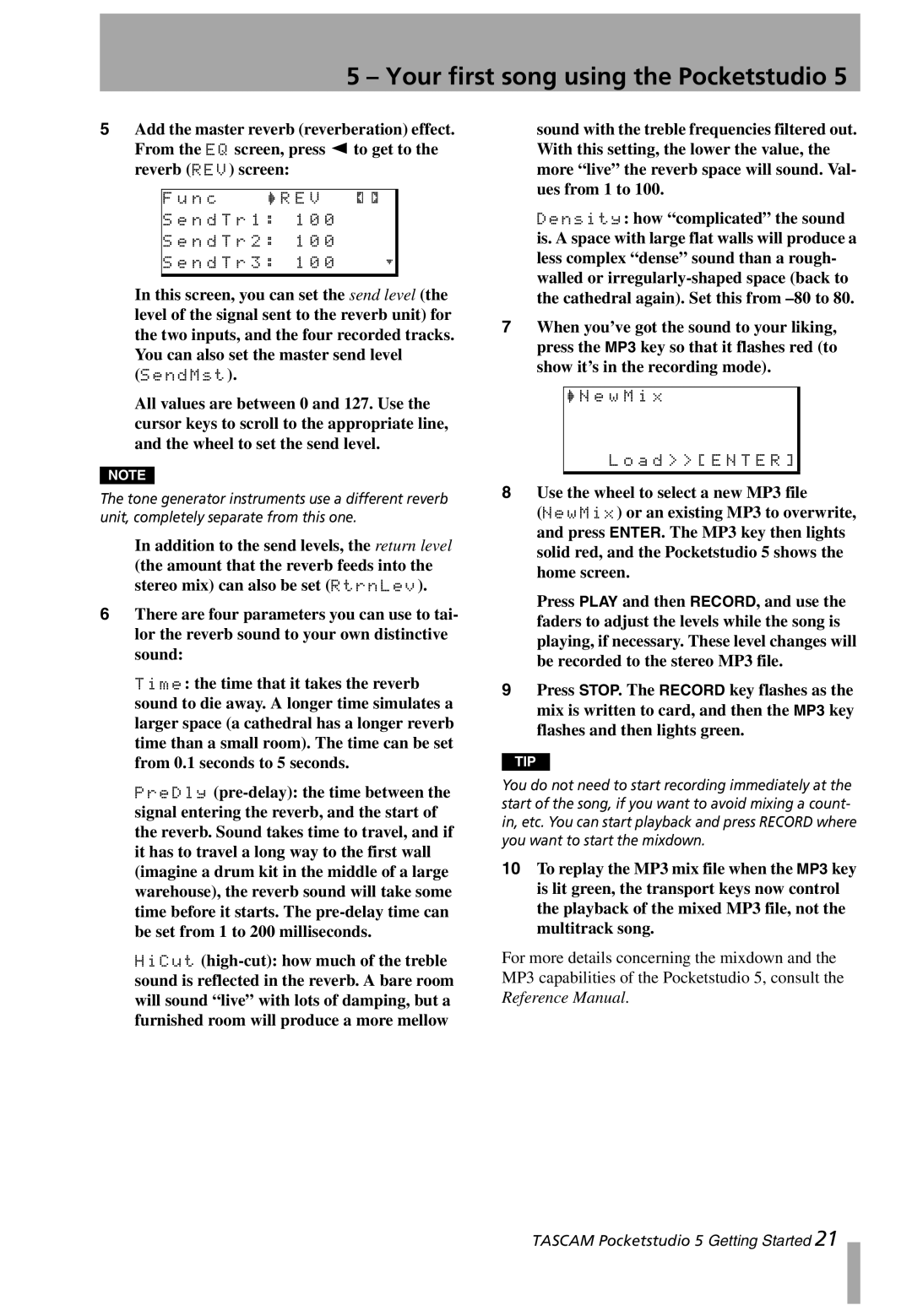
5 – Your first song using the Pocketstudio 5
5Add the master reverb (reverberation) effect. From the EQ screen, press Ó to get to the reverb (REV) screen:
F u n c | / R E V | , . | |
S e n d T r 1 : 1 0 0 |
| ||
S e n d T r 2 : | 1 0 0 |
| |
S e n d T r 3 : | 1 0 0 | ; | |
|
|
|
|
In this screen, you can set the send level (the level of the signal sent to the reverb unit) for the two inputs, and the four recorded tracks. You can also set the master send level (SendMst).
All values are between 0 and 127. Use the cursor keys to scroll to the appropriate line, and the wheel to set the send level.
NOTE
The tone generator instruments use a different reverb unit, completely separate from this one.
In addition to the send levels, the return level
(the amount that the reverb feeds into the stereo mix) can also be set (RtrnLev).
6There are four parameters you can use to tai- lor the reverb sound to your own distinctive sound:
Time: the time that it takes the reverb sound to die away. A longer time simulates a larger space (a cathedral has a longer reverb time than a small room). The time can be set from 0.1 seconds to 5 seconds.
PreDly
HiCut
sound with the treble frequencies filtered out. With this setting, the lower the value, the more “live” the reverb space will sound. Val- ues from 1 to 100.
Density: how “complicated” the sound is. A space with large flat walls will produce a less complex “dense” sound than a rough- walled or
7When you’ve got the sound to your liking, press the MP3 key so that it flashes red (to show it’s in the recording mode).
/N e w M i x
L o a d > > [ E N T E R ]
8Use the wheel to select a new MP3 file
(NewMix) or an existing MP3 to overwrite, and press ENTER. The MP3 key then lights solid red, and the Pocketstudio 5 shows the home screen.
Press PLAY and then RECORD, and use the faders to adjust the levels while the song is playing, if necessary. These level changes will be recorded to the stereo MP3 file.
9Press STOP. The RECORD key flashes as the mix is written to card, and then the MP3 key flashes and then lights green.
TIP
You do not need to start recording immediately at the start of the song, if you want to avoid mixing a count- in, etc. You can start playback and press RECORD where you want to start the mixdown.
10To replay the MP3 mix file when the MP3 key is lit green, the transport keys now control the playback of the mixed MP3 file, not the multitrack song.
For more details concerning the mixdown and the MP3 capabilities of the Pocketstudio 5, consult the Reference Manual.
TASCAM Pocketstudio 5 Getting Started 21
